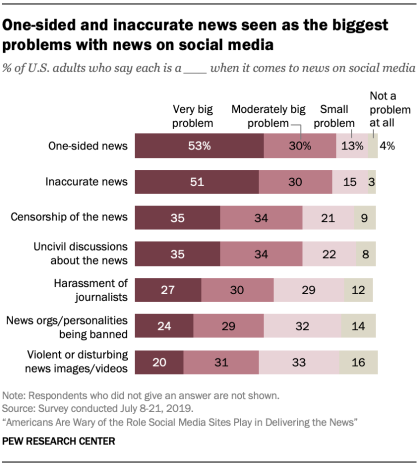Audience Building and Facebook
There are a few big reasons, as with Google, why the initial gold rush window with Facebook is closing.
Replaced organic reach. We know that organic reach on Facebook is nearly non-existent – instead it’s pay-to-play. We noted this in our constituent acquisition white paper and the big brands are acting on it. There are few more consumer-facing and consumer -focused brands than Nike. Their last organic Facebook post was January 28, 2018. That’s eight cabinet secretaries ago.* But Nike has more than 7,000 ads currently running on the Facebook platform in the United States that have had an impression in the past day as I write this.
Nike is moving to where they can bring people into their ecosystem to transact business; that’s not organic content. So they pay and it’s worth it. So too with nonprofits who have used Facebook’s effective advertising platform. M+R says the average nonprofit post reaches 4% of followers, which is actually more than most sectors. Not much here is news.
What is news is, well, Facebook News. A couple weeks ago, Facebook announced the Facebook News section on its mobile app. They are paying select news publishers for content and designating others (including Breitbart – my thoughts on them are here… at least some of the printable ones are) as trusted providers of news.
This move makes sense for Facebook. The paying–for-content part, not the Breitbart part. They have a very profitable ad machine that requires a torrent of non-ad content to run effectively. If Facebook users aren’t getting enough organic-content, Facebook must supplement it. So they pay for content so they can surround it with ads.
(The next logical step in the playbook is for Facebook to start creating their own content for the same reason Netflix did – you don’t want the content creators to seize control of distribution if you are a distributor.)
The saying went that if you aren’t the purchaser, you are the product. With Facebook, nonprofits were both creating the experience and the product. Now, we are being replaced as unreliable.
Ads getting more expensive. In Facebook’s latest quarterly report, they showed daily users were up 9% year over year and ad revenue was up 28% year-over-year.
Facebook hasn’t added substantial ad inventory in the past year. That means that the difference between 9% and 28% is increased costs to advertisers. Sure enough, Adstage analysis shows a 21% increase in cost-per-click on audience network ads and cost-per-impression went up 90% year-over-year.
This isn’t news to us nonprofits: we had 25% higher cost and 2% fewer impressions last year on our digital ad spend at end of year, per M+R.
Ads getting more expensive, part two: So let’s assume the baseline trend is static inventory and increased demand, which sophomore-year economics tells us price will go up.
There’s an election coming up next year. There are several good studies on what happens to charitable giving during elections ranging from everything-is-cool to the-fire-the-fire-it-burns. So I’m not going to make guesses on what will happen to overall giving during this period, especially because this U.S. presidential election looks to be unprecedented, just like the one before it.
But what will happen is more demand for Facebook ads during this time as Facebook in its, um, wisdom (?) has decided to keep running political ads during the election season.
Think who you would target if you were a campaign official. Me, I’d identify contacts by interest groups. I’d look for environmentalists, gun fans, civil liberties advocates, nativists, etc. – precisely the same groups many nonprofits will be looking for (or to suppress, depending on our causes). So the folks we are trying to reach will be the same people the 2020 candidates are trying to reach.
And it will not be a small amount of money. NYU found between $1 and $5 million was spent on 76 to 220 million impressions of Facebook political advertising in a two-week period in September of 2018. That’s a midterm – non-presidential – election year, more than a month out from the election. And that’s only federal candidates. Not state or local or PACs or super-PACs or super-duper PACs.
Those impressions must come from somewhere. As competition enters the marketplace, prices go up. And those ads have an unfair advantage — Facebook changed its policies to allow political ads on the site to lie. Since the things that drive engagement on Facebook (thus lowering advertising costs) are spectacle and outrage, one would expect an ad that can lie results in gaining the system to achieve lower costs than one that can’t.
Trust. Over half of Americans say they get news from Facebook, according to Pew Research Center. And yet they don’t often trust the news they get from Facebook:

Now people can lie. Lying hurts trust. And part of the power of advertising on Facebook is that people aren’t good at distinguishing what’s an ad and what’s organic content there – it’s all jumbled in the same feed. Facebook has tried to put itself above the fray, saying they allow for free speech (an ironic use of “free”). But if Facebook gets to the point where its accuracy level parallels the Sharpie scrawling on a high school bathroom wall, users likely won’t care if it’s your organization’s post or a political ad they tune out while trying to find their high school friend’s baby pictures. As we’ve said with programmatic advertising, you are judged by your context and the company you keep.
Bottom line: the time to acquire constituents on Facebook might be now, before prices explode and while your ad still keeps quality company.
Nick
* Acosta, Mattis, Nielsen, Perry, Sessions, Shulkin, Tillerson, Zinke.
P.S. On Monday, Facebook rebranded itself FACEBOOK to distinguish itself from the Facebook product that it owns. It’s not used here because I didn’t want to yell at you.


